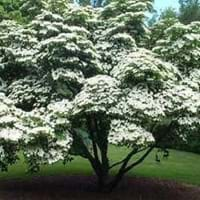Life Span
Annual and Perennial
Perennial
Type
Bulb or Corm or Tuber
Tree
Origin
Central America, South America
North America, United States, Northeastern United States, Mid-Atlantic United States, Southeastern United States, North-Central United States, Canada
Types
Vine, Flowering plant
Chinese kousa dogwood, Blue Shadow kousa, Weaver's Weeping dogwood
Habitat
All sorts of environments, Along Railroads, Banks, Moist Ditches, Roadsides, rocky banks of streams
gardens, Near ponds, Wet Woods
USDA Hardiness Zone
10-13
4-8
Sunset Zone
21,22
2a, 2b, 3a, 3b, 4, 5, 6
Habit
Vining/Climbing
Spreading
Minimum Width
Not Available
Flower Color
Purple, Rose
White, Ivory
Flower Color Modifier
Bicolor
Bicolor
Fruit Color
Not Available
Purple, Black
Leaf Color in Spring
Purple, Dark Green, Black
Green
Leaf Color in Summer
Light Green
Green
Leaf Color in Fall
Several shades of Green
Burgundy
Leaf Color in Winter
Light Green
Not Available
Plant Season
Spring, Summer, Fall, Winter
Spring, Summer, Fall, Winter
Sunlight
Full Sun, Partial Sun
Partial Sun, Partial shade
Growth Rate
Very Fast
Medium
Type of Soil
Clay, Loam, Sand
Clay, Loam
The pH of Soil
Acidic, Neutral, Alkaline
Acidic
Soil Drainage
Well drained
Well drained
Bloom Time
Late Spring, Early Summer, Summer, Late Summer, Early Fall, Fall, Late Fall
Late Spring, Early Summer
Tolerances
Drought
Cold climate, Soil Compaction
Where to Plant?
Container, Ground
Ground
How to Plant?
Cuttings, Leaf Cutting, Tuber propagation
Seedlings, Stem Cutting
Plant Maintenance
Medium
Medium
Watering Requirements
Keep the Soil well drained, Needs very little water
Allow to dry out slightly between watering, occasional watering once established
In Summer
Lots of watering
Lots of watering
In Spring
Moderate
Moderate
In Winter
Average Water
Average Water
Soil pH
Acidic, Neutral, Alkaline
Acidic, Neutral
Soil Type
Clay, Loam, Sand
Loam, Moist, Well drained
Soil Drainage Capacity
Well drained
Well drained
Sun Exposure
Full Sun, Partial Sun
Full Sun, Partial Sun, Partial shade
Pruning
Remove damaged leaves, Remove dead branches, Remove dead leaves
Prune if you want to improve plant shape, Prune lower leaves, Prune once the plant is tall enough
Fertilizers
All-Purpose Liquid Fertilizer
Fertilize in early spring, Mulch
Pests and Diseases
Red blotch
Crown rot, Leaf spot, Red blotch, Whiteflies
Plant Tolerance
Drought
Humidity, Light Frost
Flower Petal Number
Single
Single
Showy Bark
No
Not Available
Foliage Texture
Coarse
Medium
Foliage Sheen
Matte
Glossy
Attracts
Aphids, Beetles, Cutworms, Insects, Mites, Whiteflies
Birds, Butterflies, Hummingbirds, Squirrels
Allergy
Abdominal pain, allergic reaction, Nausea, Skin rash, Twitching of face
allergic conjunctivitis, Headache, Pollen
Aesthetic Uses
Not Used For Aesthetic Purpose
Beautification, Cottage Garden, Showy Purposes
Beauty Benefits
Not Available
For treating wrinkles, Makes teeth white, Making cosmetics, Skin cleanser
Environmental Uses
Air purification
Forms dense stands, Nesting sites for birds, Shadow Tree, soil stabilisation
Medicinal Uses
Cures constipation, Fiber, Low calories, lowering blood pressure, Potassium, ß-carotene, Vitamin A, Vitamin C
Acne, Antibiotic, Appetite enhancer, Cough, Diuretic, Emollient, Nutrients, Weight loss
Part of Plant Used
Leaves, Root, Shoots, Stem, Tuber
Bark, Flowers, Fruits, Leaves
Other Uses
Starch, Used As Food, Used as Ornamental plant
Application in Handicrafts, Decoration Purposes, Grown for shade, Used as Ornamental plant
Used As Indoor Plant
Sometimes
No
Used As Outdoor Plant
Yes
Yes
Garden Design
Container, Edible, Groundcover, Hanging Basket, Herb / Vegetable, Mixed Border, Rock Garden / Wall, Vine
Feature Plant, Foundation, Mixed Border
Botanical Name
IPOMOEA batatas 'Blackie'
CORNUS alternifolia
Common Name
Blackie Sweet Potato Vine, Sweet Potato Vine
Alternate-leaved Dogwood, Pagoda Dogwood
In German
Süßkartoffel
Wechselblättriger Hartriegel
In French
Patate douce
Cornus
In Spanish
Ipomoea batatas
Cornus alternifolia
In Greek
Sweet potato
Cornus
In Portuguese
Batata-doce
Cornus
In Polish
Wilec ziemniaczany
Dereń
In Latin
Ipomoea batatas
Cornus
Phylum
Tracheophyta
Magnoliophyta
Class
Magnoliopsida
Magnoliopsida
Family
Convolvulaceae
Cornaceae
Clade
Angiosperms, Asterids, Eudicots
Angiosperms, Asterids, Eudicots
Tribe
Not Available
Not Available
Subfamily
Not Available
Not Available
Number of Species
Not Available
Not Available
Season and Care of Sweet Potato Vine and Pagoda Dogwood
Season and care of Sweet Potato Vine and Pagoda Dogwood is important to know. While considering everything about Sweet Potato Vine and Pagoda Dogwood Care, growing season is an essential factor. Sweet Potato Vine season is Spring, Summer, Fall and Winter and Pagoda Dogwood season is Spring, Summer, Fall and Winter. The type of soil for Sweet Potato Vine is Clay, Loam, Sand and for Pagoda Dogwood is Clay, Loam while the PH of soil for Sweet Potato Vine is Acidic, Neutral, Alkaline and for Pagoda Dogwood is Acidic.
Sweet Potato Vine and Pagoda Dogwood Physical Information
Sweet Potato Vine and Pagoda Dogwood physical information is very important for comparison. Sweet Potato Vine height is 15.00 cm and width Not Available whereas Pagoda Dogwood height is 550.00 cm and width 490.00 cm. The color specification of Sweet Potato Vine and Pagoda Dogwood are as follows:
Sweet Potato Vine flower color: Purple and Rose
Sweet Potato Vine leaf color: Purple, Dark Green and Black
Pagoda Dogwood flower color: White and Ivory
- Pagoda Dogwood leaf color: Green
Care of Sweet Potato Vine and Pagoda Dogwood
Care of Sweet Potato Vine and Pagoda Dogwood include pruning, fertilizers, watering etc. Sweet Potato Vine pruning is done Remove damaged leaves, Remove dead branches and Remove dead leaves and Pagoda Dogwood pruning is done Prune if you want to improve plant shape, Prune lower leaves and Prune once the plant is tall enough. In summer Sweet Potato Vine needs Lots of watering and in winter, it needs Average Water. Whereas, in summer Pagoda Dogwood needs Lots of watering and in winter, it needs Average Water.





